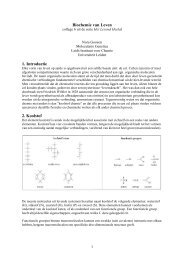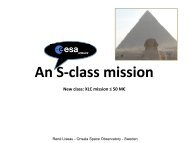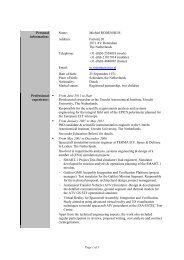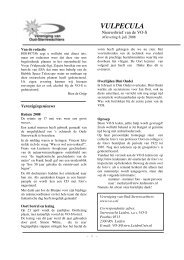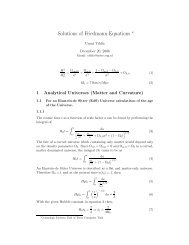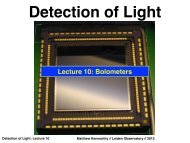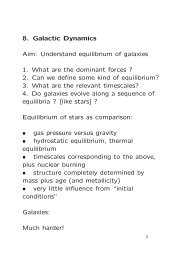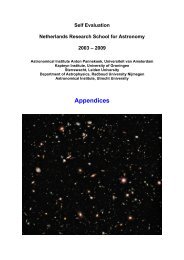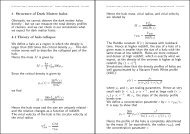P E R S B E R I C H T - Leiden Observatory - Universiteit Leiden
P E R S B E R I C H T - Leiden Observatory - Universiteit Leiden
P E R S B E R I C H T - Leiden Observatory - Universiteit Leiden
Create successful ePaper yourself
Turn your PDF publications into a flip-book with our unique Google optimized e-Paper software.
THIS PRESS RELEASE IS EMBARGOED UNTIL 27 May 2009, 19.00 CEST<br />
P R E S S R E L E A S E<br />
Nederlandse Onderzoekschool voor Astronomie (NOVA)<br />
---------------------------------------------------------------------------------------------------<br />
<strong>Leiden</strong>, The Netherlands, 25 May 2009<br />
Astronomers reveal the changing phases of an extrasolar planet<br />
Astronomers from <strong>Leiden</strong> University in the Netherlands show for the first time<br />
that a planet orbiting a star other than the Sun exhibits changing phases just as is<br />
seen for our own moon. The extrasolar planet, CoRoT-1b, was discovered by the<br />
French/European satellite CoRoT, and is located at a distance of about 1600 light<br />
years in the constellation Monoceros. The results will be published in the May<br />
28th issue of Nature.<br />
From the observations of the CoRoT satellite the astronomers conclude that the<br />
nightside of the planet is completely dark, this while the dayside is strongly heated<br />
by the star up to about 2000 degree Celsius (3600 F). "This strong heating occurs<br />
because the distance from CoRoT-1b to the star is only 3 percent from the Earth-<br />
Sun distance", says Ignas Snellen, the leader of the research team. During the 36<br />
hours that the planet revolves around the star, astronomers observe varying<br />
fractions of the bright dayside and dark nightside of the planet. Because the star is<br />
about 10,000 times brighter than the planet, the system is observed to become<br />
brighter and darker by about one-hundredst of a percent. "A incredibly precise<br />
measurement, for which the CoRoT-team should receive all credit", according to<br />
Snellen.<br />
The measured effect is very much like the changing phases of objects in our own<br />
solar system, such as the Earth's moon, during the which Sun shines on the moon<br />
from different direction while it revolves around the Earth. Although in the case of<br />
our moon this is reflected sun-light, while for CoRoT-1b it is probably heat<br />
radiation. Interestingly, this year has been declared international year of astronomy<br />
by the United Nations, to celebrate that it has been exactly 400 years that Galileo<br />
Galilei studied the skies with a telescope for the first time. One of the first<br />
observations of the Italian astronomer where the changing phases of Venus to<br />
show the true configuration of our solar system. Now, exactly 400 years later, this<br />
same effect has been observed for a celestial body outside our solar system.<br />
E N D P R E S S R E L E A S E
<br />
More information:<br />
Dr. Ignas Snellen, <strong>Universiteit</strong> <strong>Leiden</strong><br />
Tel: 0630031983<br />
Email:snellen@strw.leidenuniv.nl<br />
Drs. Ernst de Mooij, <strong>Universiteit</strong> <strong>Leiden</strong><br />
Tel: 0715278492<br />
Email:demooij@strw.leidenuniv.nl<br />
Artikel: “The changing phases of extrasolar planet CoRoT1b”. Ignas A.G.<br />
Snellen, Ernst J.W. de Mooij, en Simon Albrecht (<strong>Leiden</strong> <strong>Observatory</strong>, <strong>Leiden</strong><br />
University), Nature (www.nature.com)<br />



